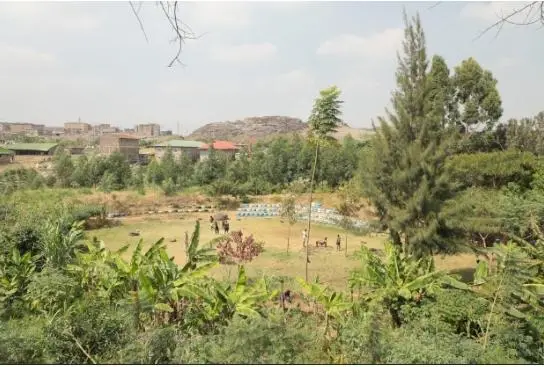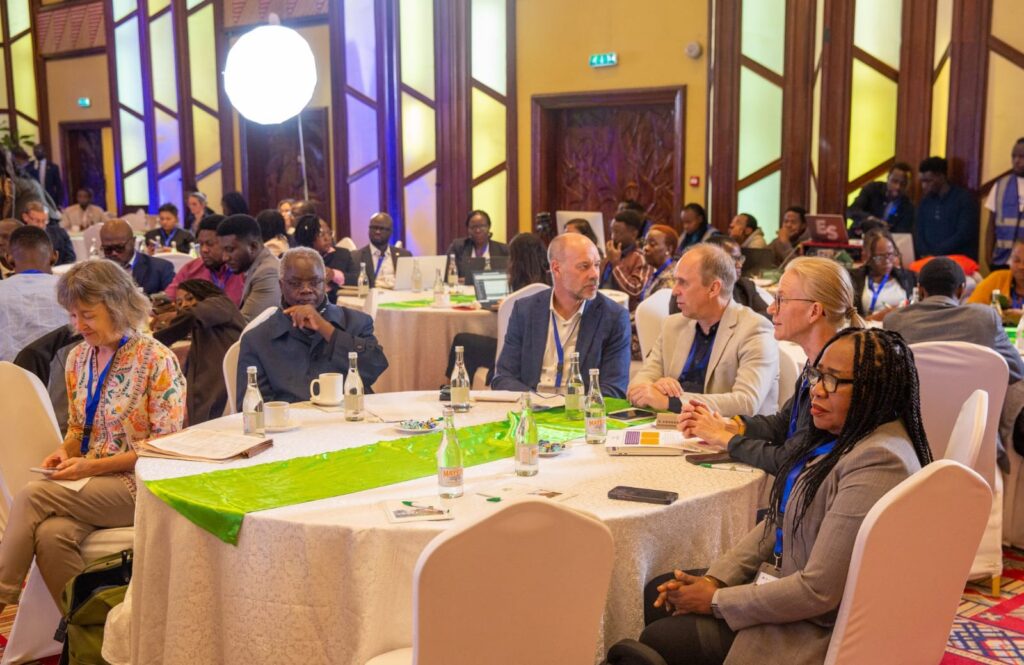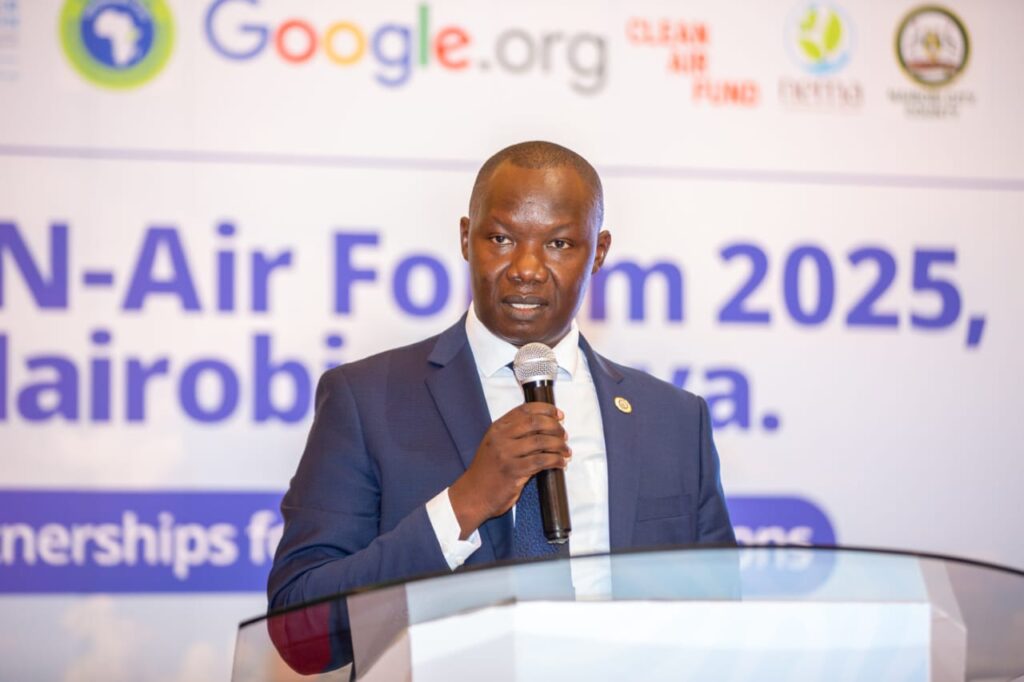
Green oasis park in the heart of Nairobi’s Lucky Summer Estate //Photo, Joel Masibo
Tucked beside the Nairobi River in Lucky Summer, an unlikely green sanctuary has taken root. Tempo Art Center, a community park carved out of a once-neglected stretch of riparian land, has blossomed into a rare refuge for biodiversity, sports, and urban healing.
But today, that sanctuary is under siege.
Encroachment by rogue developers, fueled by impunity and indifference, is eating away at this space. Temporary fences have gone up. Concrete footings have emerged where indigenous trees once stood. The very ground that hosts children’s laughter and birdsong is quietly being claimed.
Erick Otieno is one of the youth who helped establish the park.”This land was reclaimed by our hands, we cleared waste, planted trees, and turned it into something that serves the community. Now people are showing up with title deeds for riverbanks “ Otieno notes, terming the development as theft.
Tempo Art Center is more than a patch of green. It is home to Nairobi’s only grassroots kabaddi team. It’s a gathering space for local families. It supports native species and serves as a natural sponge for seasonal floods. Its existence, modest as it may seem, is critical.Yet it stands vulnerable in a city where riparian law is often more honored in breach than in enforcement.
Kenya’s Environmental Management and Coordination Act prohibits construction within a minimum 6-meter buffer from any river. The Water Act reinforces this, recognizing riparian reserves as public land essential for protecting water sources and ecosystems. But these protections are rarely upheld, especially in informal settlements where oversight is weakest.
“The problem isn’t a lack of law. It’s a lack of will,” says Mrs. Lilian Mburu, an environmental law consultant based in Nairobi. “What we’re witnessing in Lucky Summer is part of a broader pattern. Public land is repurposed for private profit, often with forged documents and tacit approval from insiders.”
In the face of this, the community is not standing still. Residents continue to maintain the park, removing encroaching debris, replanting native trees, and educating their peers. They have appealed to the National Environmental Management Authority (NEMA), the Nairobi Rivers Commission, and City Hall. But no official action has followed.
“We’ve written letters, taken videos, and mapped the encroachment. Still, nothing,” says Wycliffe Mwangi, a local mobilizer. “It feels like we’re shouting into silence. But we’ll keep shouting. We won’t let them steal what belongs to all of us.”
What the community is asking for is clear. They want immediate enforcement of riparian land laws, revocation of illegal titles, and formal designation of Tempo Art Center as a protected community-managed park. They seek recognition not just of the space, but of the model it represents: youth-led conservation that works.
This fight is not isolated. It mirrors battles playing out in Mathare, Kibera, and along the Ngong and Nairobi Rivers, where land, nature, and justice collide daily. But what makes Tempo Art Center different is its visibility. Its defiance.
“Let’s be clear,” says Dr. Mburu. “Losing a space like this isn’t just an environmental loss. It’s a civic failure. It tells young people that their work doesn’t matter. That the law can be ignored. That concrete is more valuable than community.”
The green along the Nairobi River is thinning. But in Lucky Summer, there is still something left to protect. And those who built it from the ground up are refusing to let it go quietly.




Cool partnership https://shorturl.fm/a0B2m